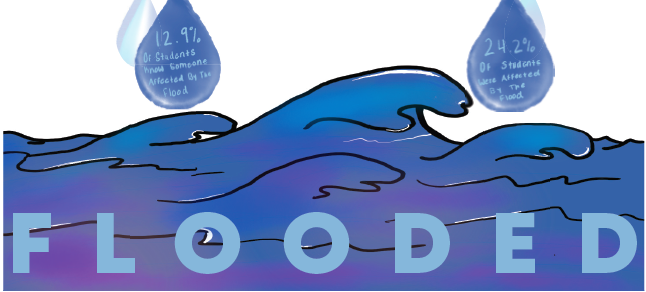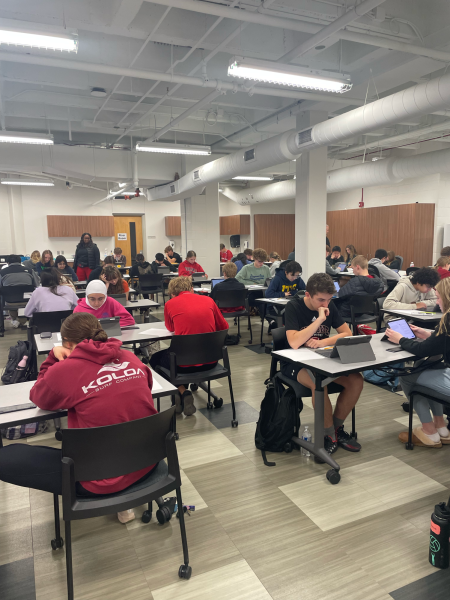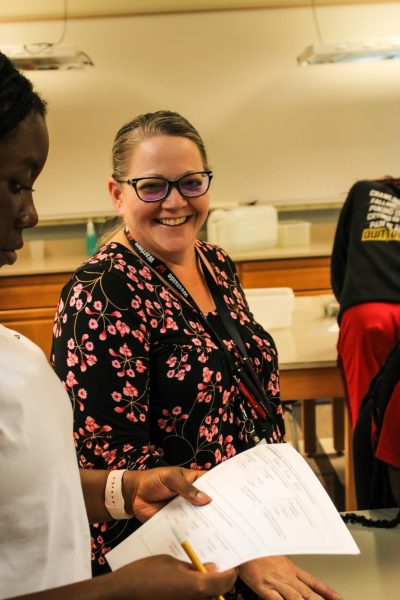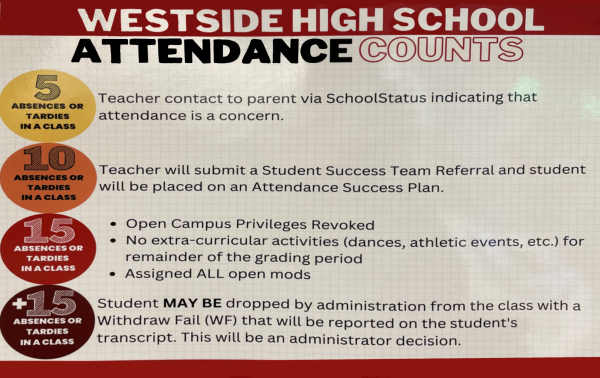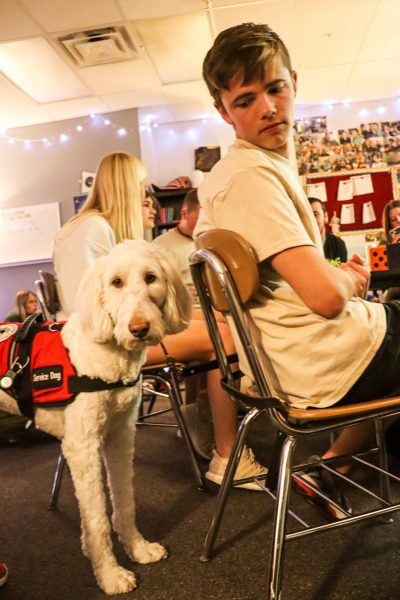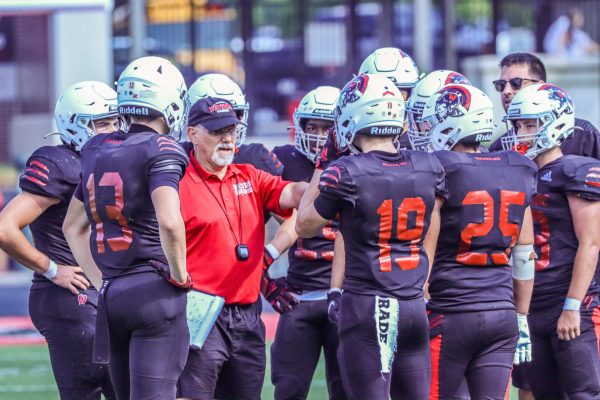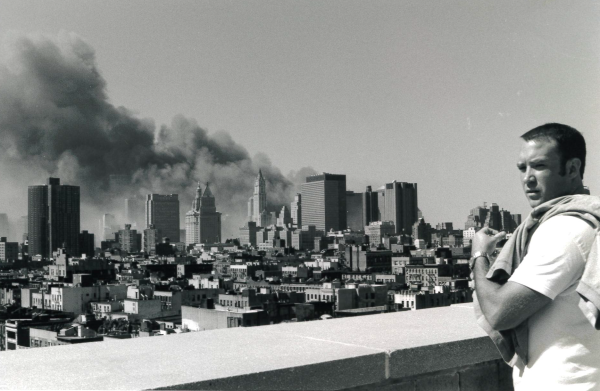Flooded
Members of Westside Community deal with the springtime flood in eastern Nebraska and Iowa
Two Science instructors Marilyn Mendick and Angela Bergman both witnessed the effects of the Nebraska Springtime flooding. Both live near and in Valley Nebraska, one of the major towns affected and evacuated because of the flooding. They had different stories but similar devastating results.
“It was very good that we left,” Mendick said. “You can always replace your things, but you can never replace you.”
The flooding was caused by a combination of steady rain fall and melting ice, creating rising water levels. There were devastating damages all over Nebraska, and many people forced to evacuate their homes. According to an article on Vox approximately 4,400 people in the region had to evacuate their homes. The flooding severity was different for everyone. For some, like Bergman she said, a wall of water flooded their neighborhood.
“We knew waters were rising and we [our family] knew that Elkhorn was flooding, “Bergman said. “What caused us to evacuate was a levy to our north-head failed. It is called the Union Dike, and it had broken.”
For others, like Mendick, the flooding came trickling in little by little.
“The water came in two waves,” Mendick said. “The first wave was all of the ice that came, and that came Thursday morning [March 14th] and Thursday afternoon is when water started to come over the barrier.”
Basements and crawl spaces were filling rapidly for a variety of reasons. According to Bergman, among these were water pumps failing to pump the water out of the house. She said it was also caused by cracks in concrete allowing a trickle of water in, and water seeping under the house into the lower areas. According to Berman, the flooding in her neighborhood would come in fast and a pump failure could lead to 4 feet of water within an hour, like some faced.
The flood has caused a variety of different problems. According to Bergman there were some people in her neighborhood with 2 inches of water and others with eight feet. For Mendick they faced problems that didn’t necessarily affect the inside of their home.
“[In the yard] the chunks of ice were the first wave.” Mendick said. “My husband stepped it out. One of them was 12 steps by 21 steps. When I say steps it would just be like a walking step like three feet. So it would be like 30 steps by 60 steps. Some were as big as my house…It was scary being on an Island. We were surrounded by water for a long period of time. ”
Both instructors had to evacuate their homes while their neighborhoods were flooded. They both said that they felt good about their decisions about evacuating their homes.
“For us it really came down to, ‘do you really want to be that person on the roof or not?” Bergman said. “When they asked us to evacuate they did that not only for your safety, but for the safety of the first responders. (The very first death of anyone from this flood was because a volunteer was driving out to rescue someone, a bridge collapsed on him and he drowned.) We didn’t want to be the reason why that would happen to somebody else. There were several other stories of rescuers who had to be rescued because others did not evacuate.”
The flooding and evacuations took place over Westside’s spring break, which according to Bergman, was convenient for those who could not be at home.
“Because our town was kind of on curfew we were not able to return home until Wednesday [March 20],” Bergman said. “You are living without some stuff. Luckily we were on spring break. If we were not on spring break it would have been very stressful. It would have been a longer drive, and it would have been harder to get everyone ready. So we got really lucky it happened over spring break.”
Although both teachers evacuated their homes they were able to return within a week of leaving. They said this was made possible thanks to the hard work of their communities and various organizations.
Westside has also come together as a community collecting water bottles for the victims of the flood, providing clean water for places where it may be polluted.
“Over 2,500 water bottles were collected and taken to the Salvation Army, to be distributed,” member of Student Council Cameran Runge, who organized the water bottle drive, said. “We needed a #BeKind Activity for this month, and because of the flood it was a quick thing that I thought we could do to make an impact.”
According to Mendick, Midwest laboratories was giving out free well tests. This was done to make sure there was clean water for those affected by the flood. Contaminated wells were an issue as they could have pesticides and bacteria washed in them from the flood water. Bergman added that two churches in Valley, St. Marks Lutheran Church and United Faith Community, also helped the community by sending volunteers to help with repairs, providing meals, and helping with damage control. Although many things could be fixed, some things were irreplaceable if damaged.
“I was worried about the sentimental stuff, like the Christmas decorations,” Bergman said. “That’s what I was most worried about. My husband took the time to get all of the stuff on the floor up. When we were hearing stories of basements filling, we were worried about those things he didn’t bring up.”
Neither teachers experienced detrimental damages to their homes. They were both able to return to their homes safely with help from others.
“The kind of help that is needed is showing up at somebody’s site where you see somebody working, and ask what you can do to help,” Bergman said. “That’s really what is needed. There are communities that are smaller that are not getting the help they need. There are ways to help that are toxic and there are ways to help to be not. I would say that any help people are trying to give, make sure you go to somebody local. Find out what the actually needs are before you donate whatever.”
Your donation will support the student journalists of Omaha Westside High School. Your contribution will allow us to purchase equipment and cover our annual website hosting costs.

Hi, my name is Luke Steiner! I am the co-Editor-in-Chief for Lance this year. I am currently a junior and this is my third year on Lance. If you have any...


